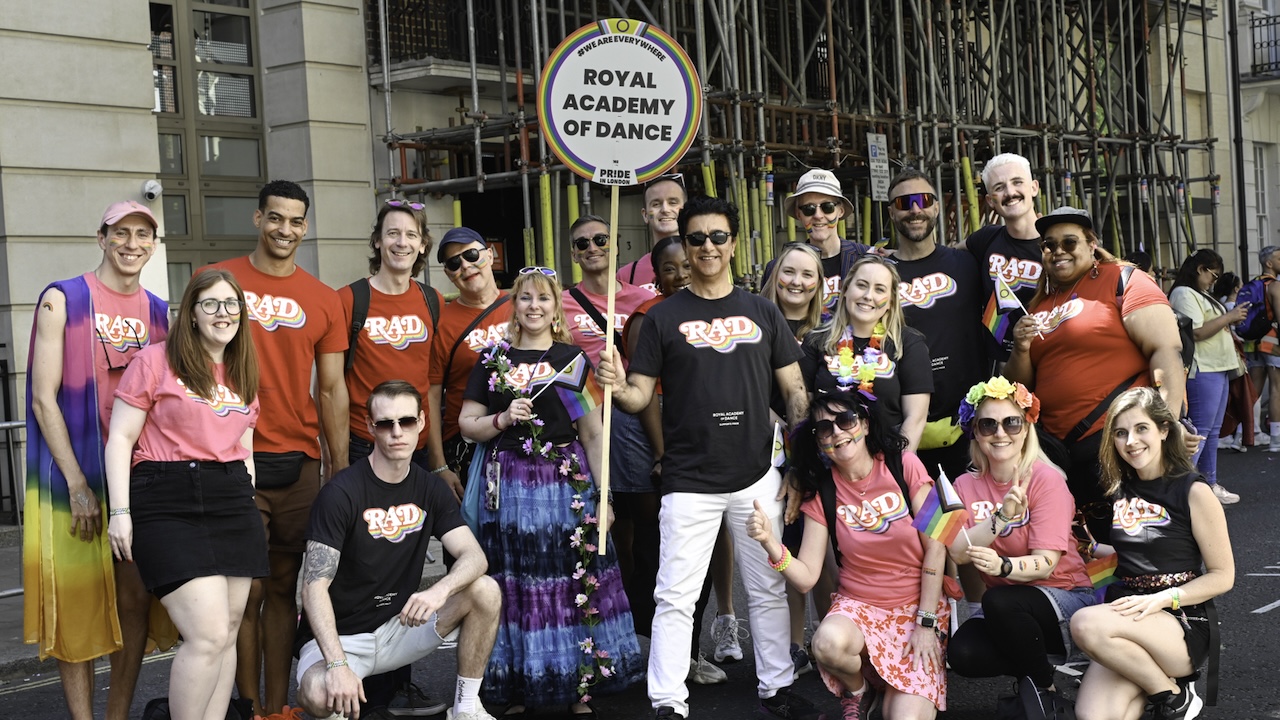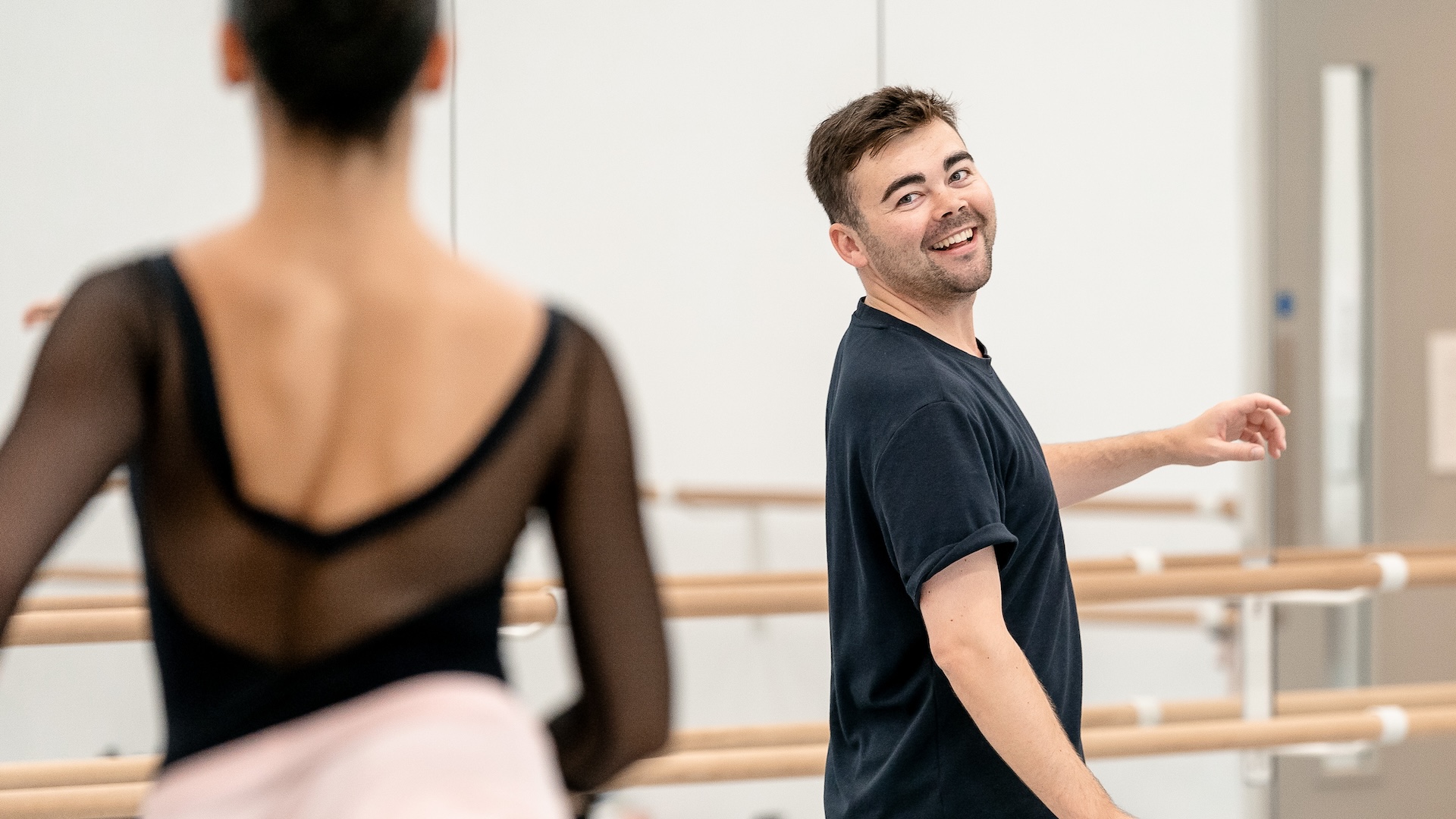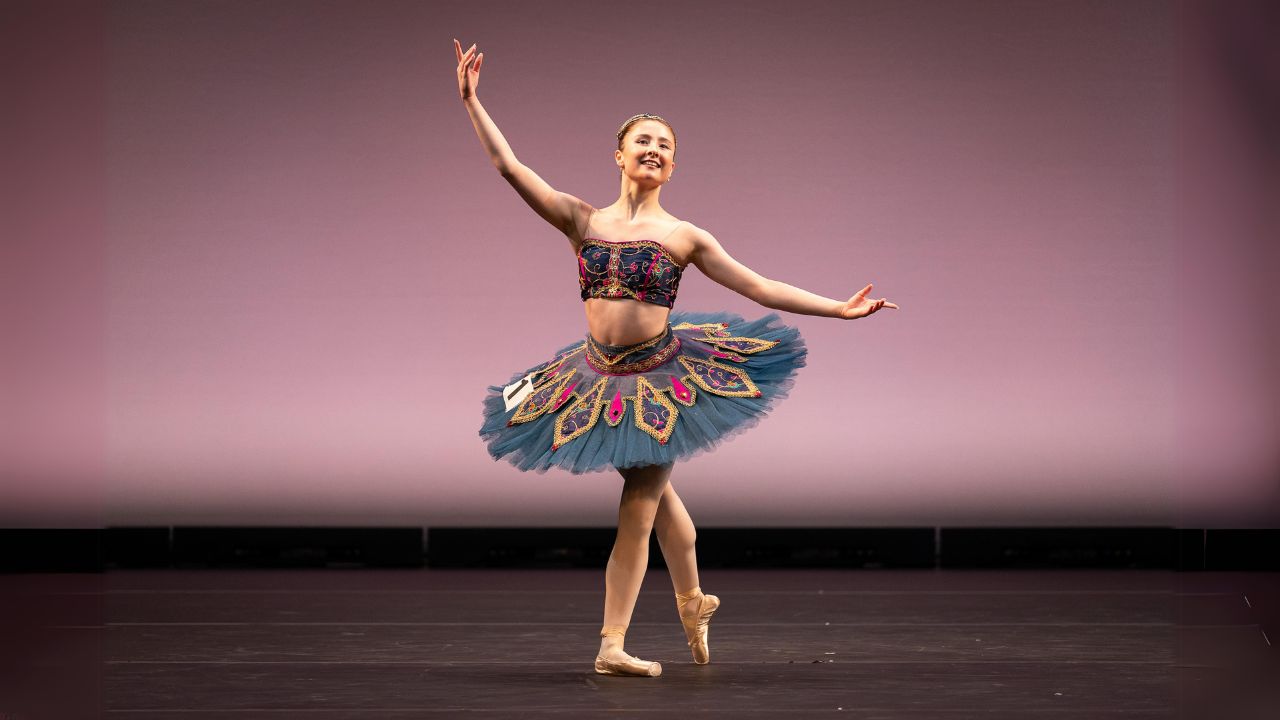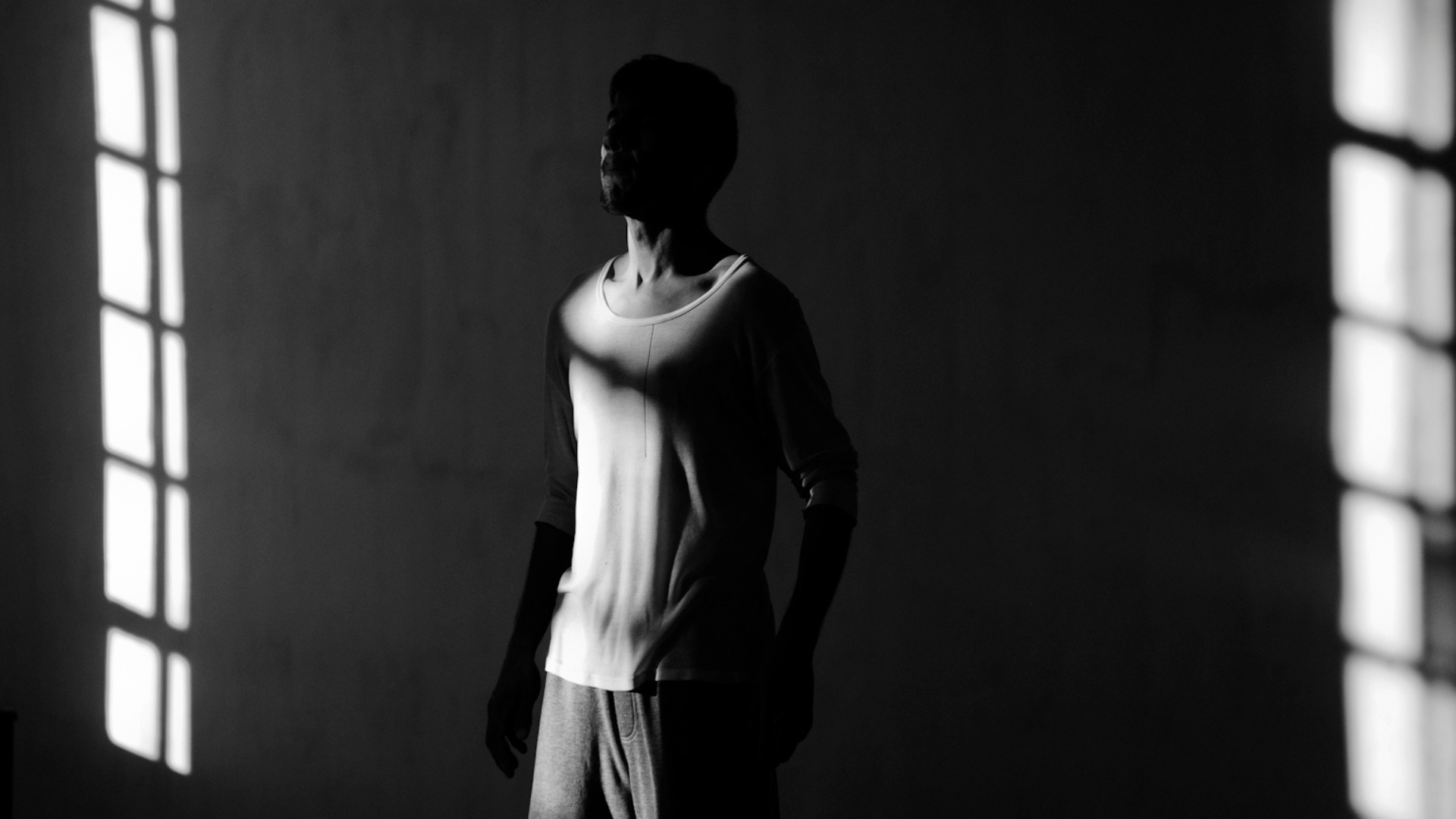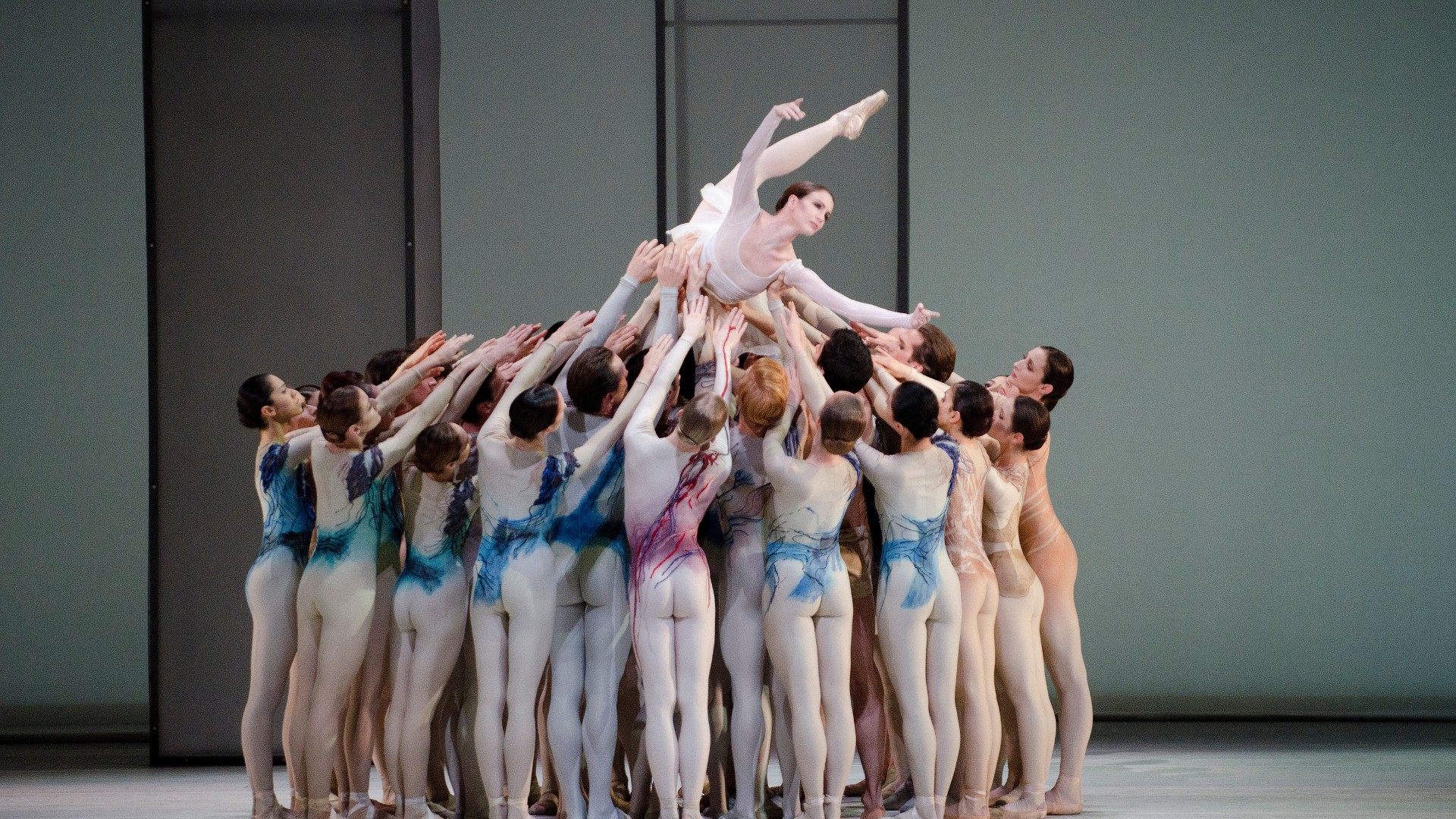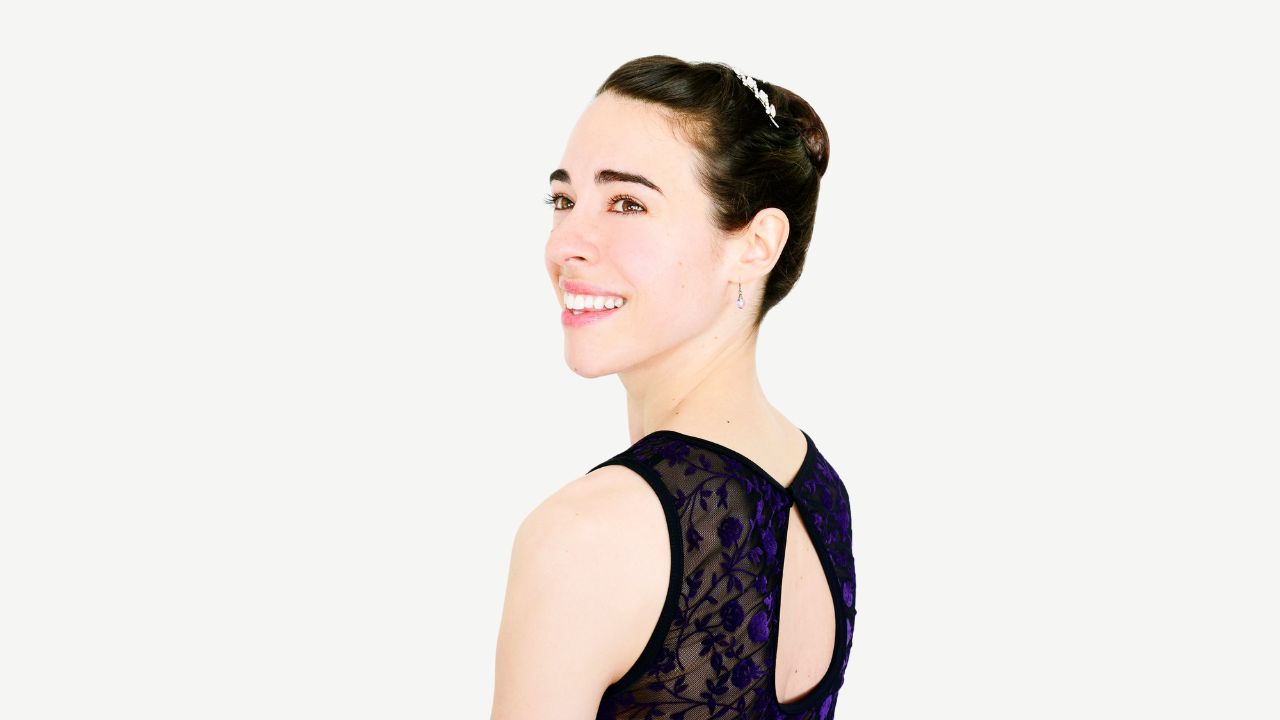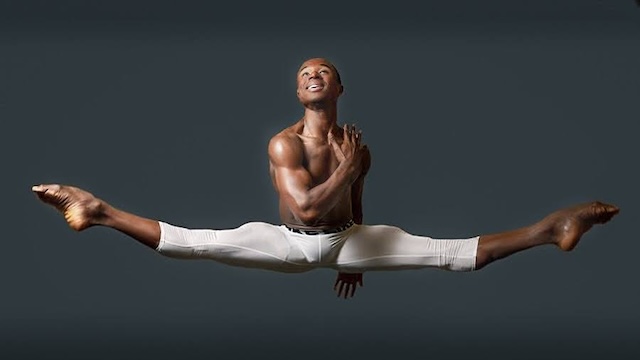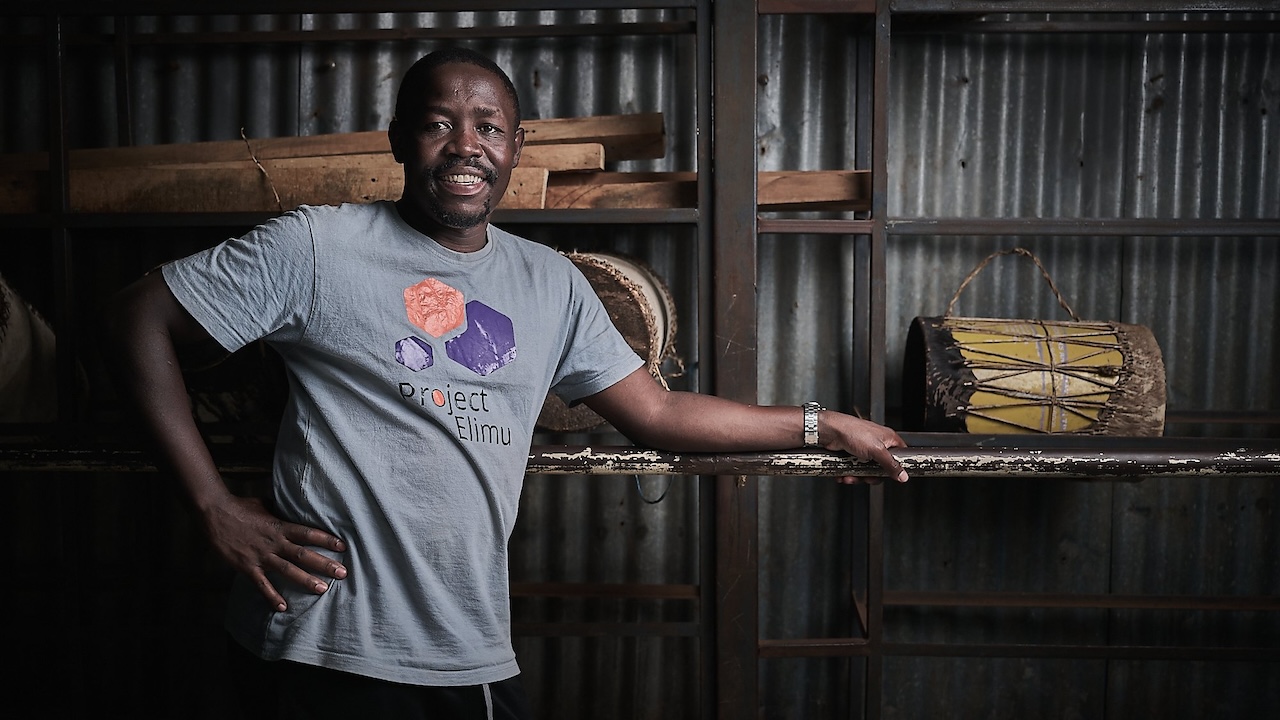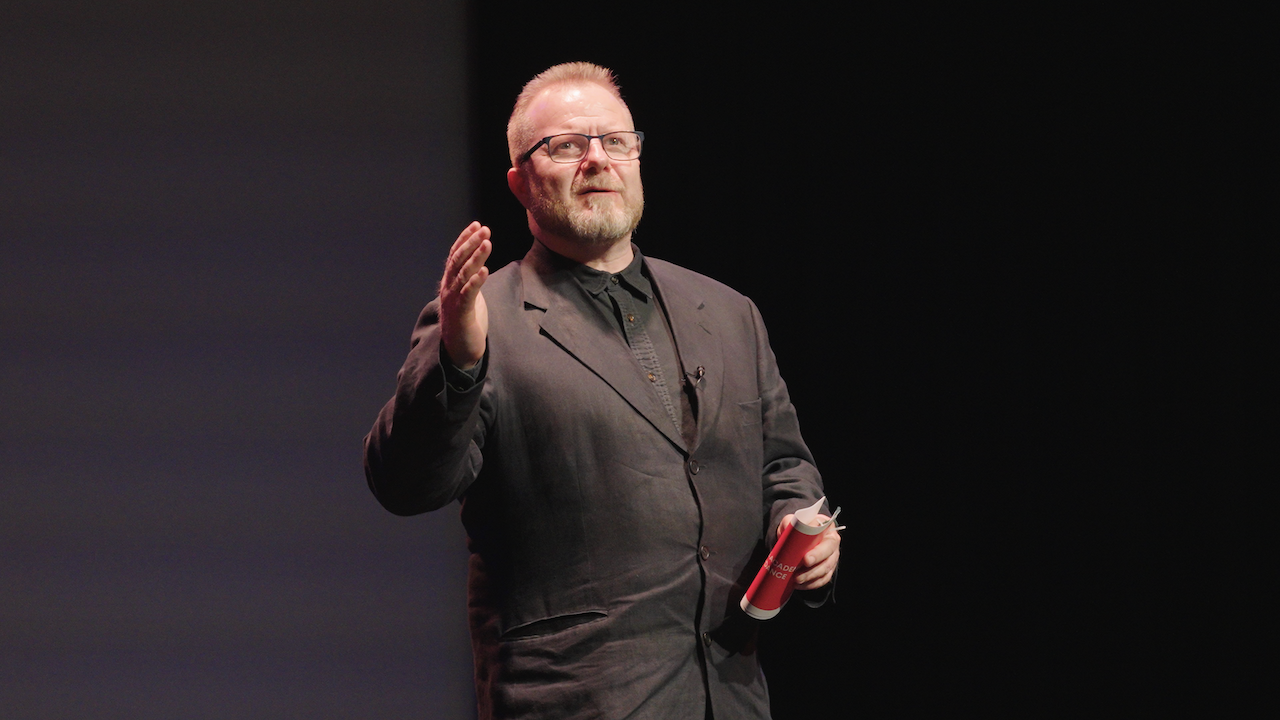Hannah, what does Pride mean to you?
To me, Pride is a celebration. A celebration of inclusion, identity and affirmation. Pride is about feeling part of a community and connection, but it is also a protest for equality and against discrimination.
What was Pride 2024 like for you?
It was really special to take part in Pride in London this year – it was the RAD’s first time walking in the parade and it was really important to us to come together as a community to celebrate, represent and support LGBTQIA2S+ rights. I walked alongside colleagues as well as RAD students, members and our local community – and it was extra special as it was my first time walking too.
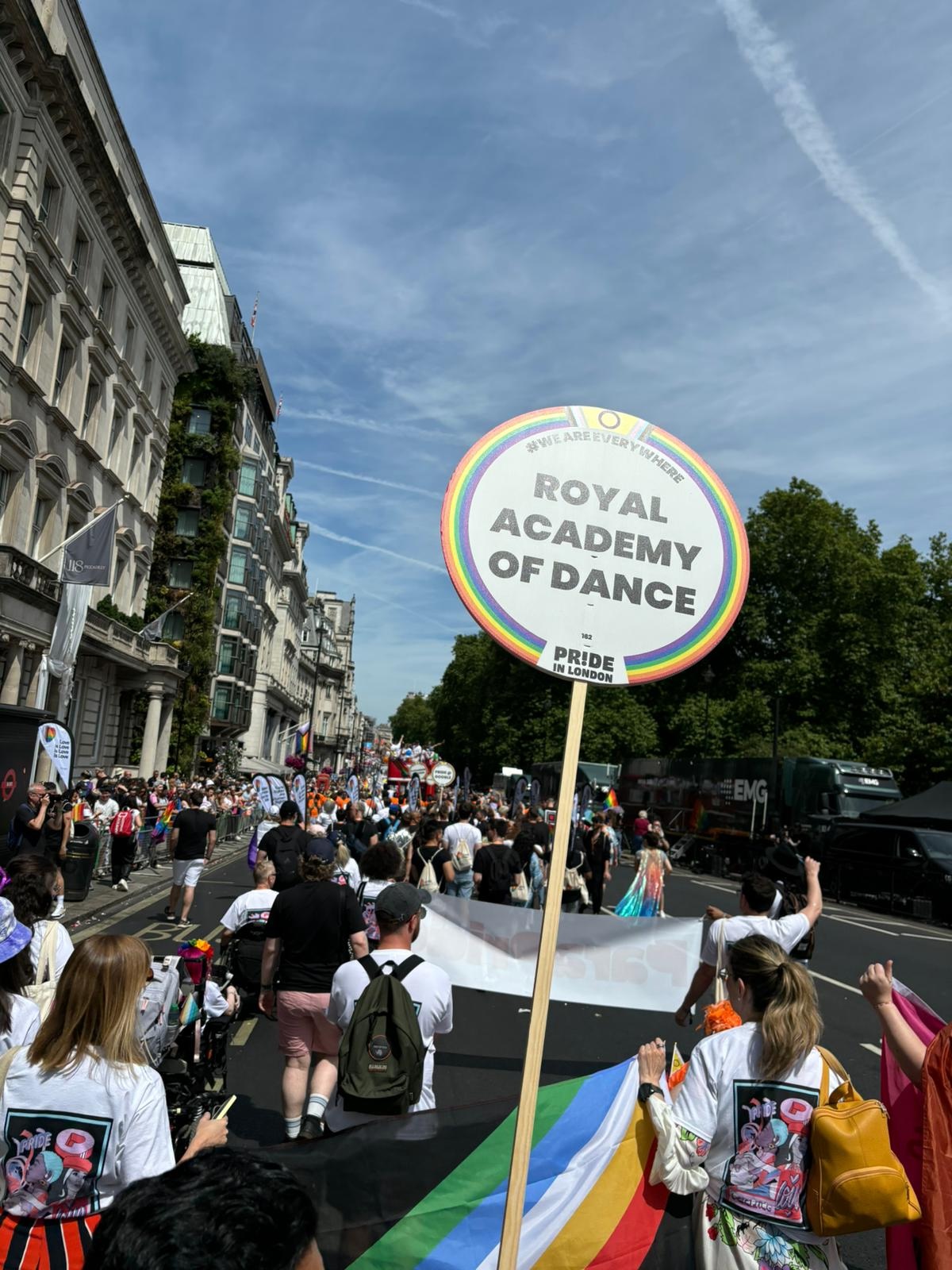
Why was it important that the RAD walked in London Pride this year?
As the RAD’s LGBTQIA2S+ working group, we felt it was important to be part of the Pride in London parade to represent our diverse community of dancers and teachers and to be visible with our support of LGBTQIA2S+ rights. It’s important to us that colleagues, members, students and dancers see that the RAD is a space that welcomes all and that dance is for everybody. I would love to think it’s the start of the RAD community globally coming together to support Pride celebrations across the world!
More widely, how important is it for organisations to create inclusive workspaces?
According to research, over a third of LGBTQIA2S+ people feel like they must hide at work. We’re at work for a huge part of our lives. Feeling like you must hide part of yourself greatly impacts both emotional and physical health.
Inclusion is about creating a safe space and enabling everyone to come to work as their whole self. Inclusive workplaces attract diverse employees, different voices and cultures, often becoming safer and happier for everyone. I’m really proud to be part of the LGBTQIA2S+ working group at the RAD and to be building community and visibility here.


What would your advice be to someone who is struggling to fit in?
Try to find your tribe. There are many groups and organisations that can help you meet others in the community, or who have felt the same way as you. Know that you are not alone! There are also fantastic initiatives and dance classes that are focused on bringing the community together. I didn’t find my queer communities until my 30s, but have found a great LGBTQIA2S+ book club and dance group in London!
How can the dance industry support the LGBTQIA2S+ community?
Visibility all year is important. Historically there has been limited representation outside of traditional gender norms and relationships, especially in ballet, but we are starting to see a slow shift, with movements like Queer the Ballet at the forefront. The more we see inclusion of LGBTQIA2S+ voices at all levels of the industry, the more likely people are to feel that dance is for them too – that they are in a safe space to come as they are.

